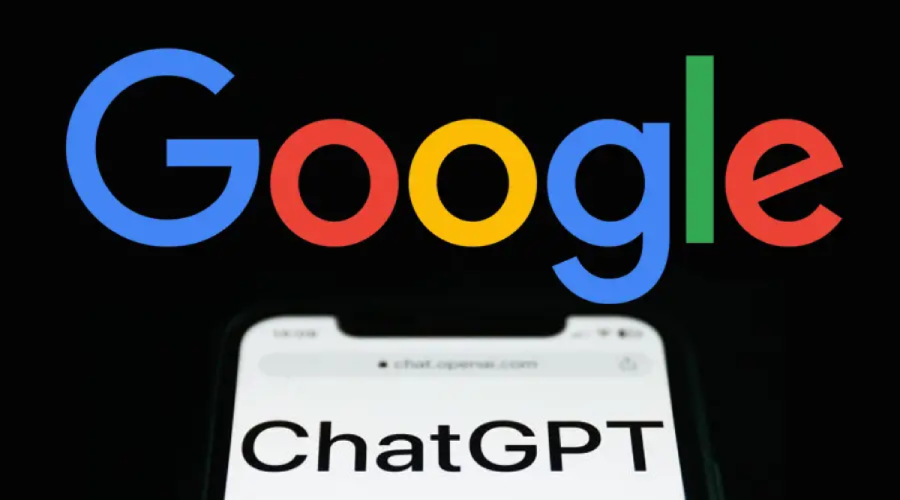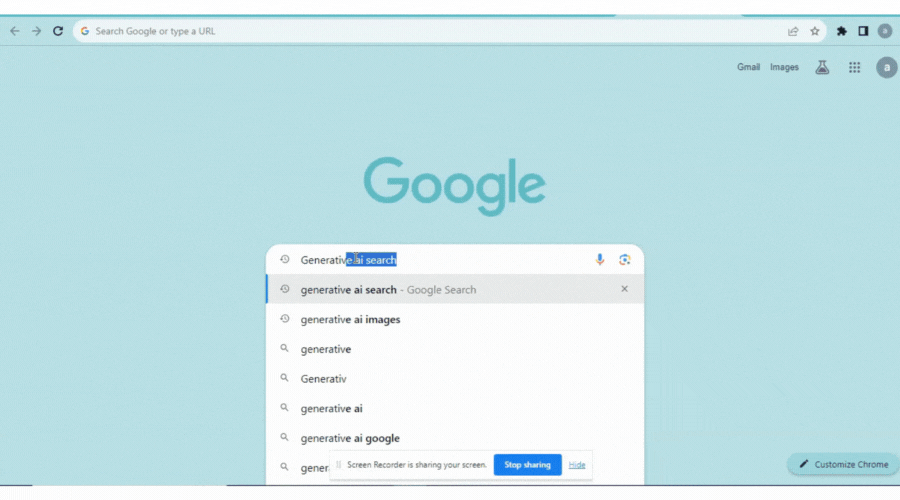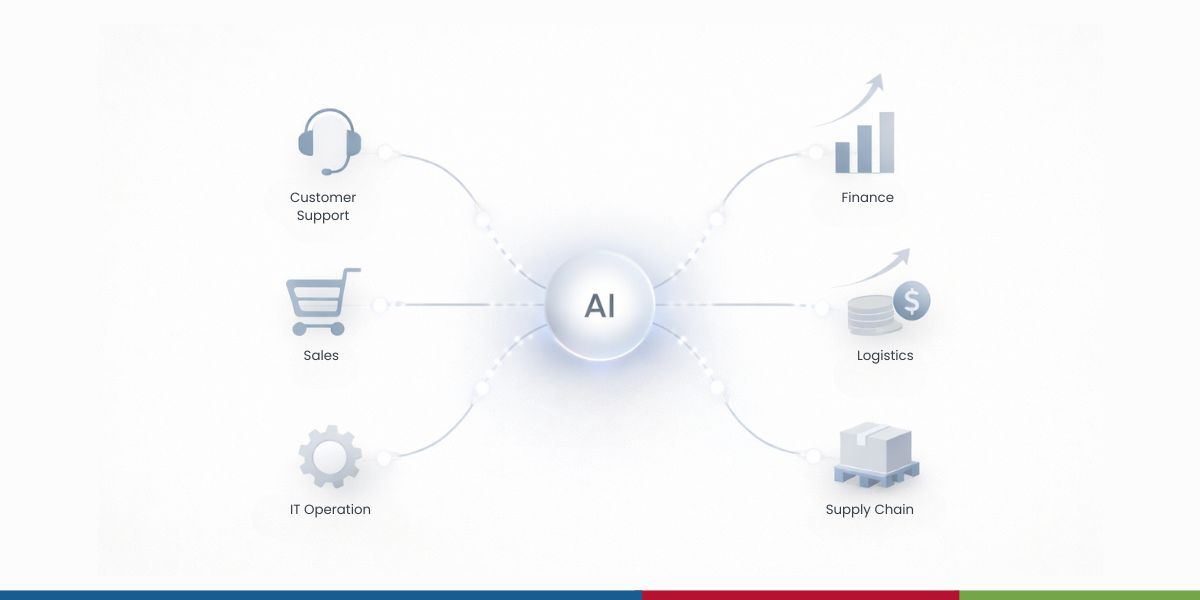Google Generative AI Search vs ChatGPT for 2024

4 min read | By Postpublisher P | 21 December 2023 | Artificial Intelligence
Before we get into the topic of Google Generative AI Search vs ChatGPT, here is a brief recap of all that happened within the last few months.
The year 2023 was all about the grand entry of generative AI. It was nothing short of a sci-fi blockbuster that kept people wondering about the limitless possibilities of artificial intelligence and how it will affect their future & livelihood.

AI has been around us for many years. But to understand the significance of Generative AI, you must picture this: machines not just crunching numbers but actually generating creative content, understanding language nuances, and even engaging in meaningful conversations just like humans.
The Big Players in AI

Here’s an overview of Generative AI’s historical milestones over the past years.
𝟐𝟎𝟏𝟖: OpenAI introduced the GPT-2 (Generative Pre-trained Transformer 2), a large-scale language model capable of generating human-like text.
𝟐𝟎𝟏𝟗: Microsoft launched the Turing Natural Language Generation generative language model with 17 billion parameters.
𝟐𝟎𝟏𝟗: Google’s BERT improved the understanding of the context in language models by considering both left and right-context words.
𝟐𝟎𝟐𝟎: OpenAI unveiled GPT-3, the third iteration of its generative pre-trained transformer, with 175 billion parameters.
𝟐𝟎𝟐𝟏: OpenAI introduced DALL-E, a multimodal AI system capable of generating images from text prompts.
𝟐𝟎𝟐𝟐: OpenAI’s ChatGPT provided a chat-based interface to its GPT-3.5 language model that allowed users to make conversations with the model.
𝟐𝟎𝟐𝟑: OpenAI announced the GPT-4, a multimodal language model that can process both text and image prompts.
𝟐𝟎𝟐𝟑: Google Bard was introduced by Google to facilitate collaboration with generative AI to to leverage the power of artificial intelligence in creative and collaborative endeavors.
𝟐𝟎𝟐𝟑: Google’s Search Generative Experience (SGE) is an innovative AI-powered search enhancement that provides unique summaries for queries and enables conversational mode for interactive responses.
Google & ChatGPT AI

When we talk about generative AI, it’s impossible not to mention the catalyst ChatGPT that brought generative AI to our hands. Within five days of its release, ChatGPT acquired more than 1 million users.
According to the latest data, ChatGPT currently has around more than 180 million users. It showed us the magic of AI – it’s not just about zeros and ones anymore; it’s about machines understanding the rhythm of human communication.
Shortly after the impressive response to ChatGPT, the tech giant Google came up with an alternative platform called Bard, powered by Google’s language model. Though Bard didn’t meet the expectations and faced a downfall in shares, the company introduced a search generative experience.
The Google generative search can be used to answer a query when a person “Googles” normally. The top of the results page will show the AI-generated response, and below that, the traditional website links will appear.

The future is bright for those who are on board with this AI revolution and use it effectively. Fortunately or not, we have a zillion options of AI tools, software, and platforms available, and we need to find the best one among them. In this article, we will have a look at the pros & cons of the two big players, Google Generative AI Search vs ChatGPT.
How does Generative AI affect search?
Generative AI in search will enhance the way information is retrieved, processed, and presented. Here’s how the effects will be in real-life use cases:
-
Auto-generating product descriptions, blog posts, or answers to user queries to improve the depth and relevance of search results.
-
Chatbots and virtual assistants use generative AI to comprehend and respond to user queries in a conversational manner.
-
Multimodal searching for products online by providing a combination of text and image descriptions, improving accuracy and relevance in results.
-
Streaming services using generative AI to suggest movies or music based on past user interactions and preferences.
-
Search engines generate short summaries of news articles or research papers for quick user understanding.
-
AI-powered search engines that can provide direct and contextually relevant answers to user queries rather than just a list of links.
-
Ability to visually search for similar images or products based on a photo, leveraging generative models that understand visual features.
-
Search engines provide instant translations of search results, making information accessible to a global audience.
-
Chat-based search interfaces allow users to have dynamic conversations with AI to refine and specify their search queries for more precise results.
What is the difference between ChatGPT and Google Search?
You must have been used to Google search whenever you need answers. You might also have mastered the art of Googling to get the best and most relevant answers right away. But when ChatGPT came, were you a bit confused about how it is different from Google search results? You’re not alone.
ChatGPT is an AI chatbot – more like a virtual conversation buddy who is super advanced. It’s powered by OpenAI’s technology and trained with a huge volume of data for interactive chats and content creation. You can toss questions, discuss ideas, or even get help drafting an email. The natural language processing tech makes it sound cool – like a human.
Google Search is the same old tremendous search engine. You throw in a query, and it sifts through the vast web to find the most relevant results. It provides information based on what the search engines have indexed and saved in its servers. Google is not for chatting or to make conversations.
| Ability | ChatGPT | Google Search |
|---|---|---|
| Conversational | ✅ | ❌ |
| Information Retrieval | ❌ | ✅ |
| Natural Language Understanding | ✅ | ❌ |
| Static Responses | ❌ | ✅ |
| Real-Time Interaction | ✅ | ❌ |
| Dynamic Responses | ✅ | ❌ |
| Indexing Structured Data | ❌ | ✅ |
Is ChatGPT the end of Google?
With traffic skyrocketing to the AI search chatbot, people started questioning the longevity of Google, and some started predicting the doomsday of it. Will the new tool replace the need for traditional searches?
The answer is “no” as of now. Though there is a huge amount of traffic to ChatGPT, it has not affected Google’s search revenues as they have remained stable. Moreover, Google has this insane database and algorithms that have been fine-tuned over the years, which is pretty hard for a new tool to compete with.
As generative AI becomes more integrated into our lives, there is an increased focus on addressing ethical considerations, such as privacy, security, and bias. It is quite not very obvious how the new tool adapts and secures the conversation. Unintentionally biassed replies and not being up-to-date with current events are still a challenge to overcome.
Introducing Google Generative AI Search

The generative AI search introduced by Google brought a new era of intelligent information retrieval that improved the search experience. It uses machine learning algorithms that predict users’ search queries to provide relevant results in real-time.
Unlike traditional search engines that rely on keywords and predefined algorithms, Google Generative AI Search harnesses the power of generative artificial intelligence (AI) to understand and respond to user queries.
The AI-generated answers are taken from the relevant articles indexed by Google. The search results are displayed in the language of your choice (the search result language) for the location of your specific country. These answer overviews are generated and displayed above the traditional search results.
Generative AI answers are supported by info from across the web and Google’s Knowledge Graph – a collection of info about people, places, and things. As of now, these answers are just to quickly help you get an overview of a topic. The limitation of the search generative experience is that it is still in the early experimental stage (search labs), so the quality and availability may vary.
How To Use Google Search Generative Experience?
Turn on Google AI generative search with the below steps:
-
Visit the Google Labs website and log in with your Google account.
-
Go to the Generative AI section and find the ‘Sign Up’ button.
-
Review the terms and conditions carefully, then click on the ‘Submit’ button.
- After successfully registering through Labs, you’re ready to use the Google Generative AI search feature.
Upcoming Updates with Generative AI in Search
Google is not stopping with just a generative search experience. The vision is big. Here is what we can expect in the coming months.

1. Create Images with Generative AI
Ever wished you could make your creative visions directly through your search engine? Why go for other tools when you can search and make your picture? Yes, Google users will soon have the option to create AI-generated images directly within Google Images. From making unique birthday cards for your friends birthday to exploring ideas for your next design project, you can ask Google. If the results you get didn’t match your expectations, you can still edit and refine the description until it perfectly matches your vision.
2. Written Drafts in SGE (Search Generative Experience):
If you are a student seeking guidance on a research project, or a solo-traveller planning a trip to Bali or a candidate looking to apple for a job, you can now instruct SGE to write drafts for you like these:
-
Create a draft email to a professor, seeking guidance on a research project, and attaching a brief summary of my proposal.
-
Write an itinerary draft for a week-long trip to Bali, including must-visit places, activities, and restaurant recommendations.
-
Draft an email to a potential employer expressing interest in a job position, highlighting my skills and experiences.
As a result you will be presented with a tailored draft that you can easily tweak, shorten, or infuse with a more casual tone to suit your needs. When you’re ready to add that personal touch, exporting your draft to Google Docs or Gmail is seamless. In addition to all this, Google Workspace privacy protections ensure the privacy of your information.
Google Generative AI Search vs ChatGPT for 2024
In 2024, choosing between Google and Open AI involves considering various aspects and not just one. Is Google AI more powerful than ChatGPT or vice versa? Let’s find out.
Here are the pros and cons that have to be considered.
Google Generative AI Search
| # | Pros | Cons |
|---|---|---|
| 1 | Has a massive knowledge base that draws from extensive web content for comprehensive results. | Lacks the depth of natural language understanding compared to ChatGPT. |
| 2 | Strong keyword-based search capabilities. | Relies heavily on keywords, potentially leading to less nuanced results. |
| 3 | Well-suited for structured information retrieval and factual queries. | Offers less personalised interactions compared to ChatGPT. |
| 4 | Utilises advanced algorithms for relevance ranking. | Responses are typically static and may not adapt to evolving conversation nuances. |
| 5 | Long-established as a reliable and widely used search engine. | Limited adaptability to evolving language trends without continuous updates. |
ChatGPT
| # | Pros | Cons |
|---|---|---|
| 1 | It excels in interactive dialogues and natural language understanding. | Though it generates creative responses, it could lack specificity in certain scenarios. |
| 2 | Ideal for generating creative content, writing assistance, and diverse language tasks. | It may not excel in structured data retrieval or fact-based queries. |
| 3 | It can be fine-tuned for specific applications, making it versatile for various scenarios. | Integration and fine-tuning may have a steeper learning curve. |
| 4 | Engages users in dynamic and personalised conversations. | Performance is influenced by the quality and diversity of training data. |
| 5 | Capable of understanding and maintaining context in longer conversations. | May generate responses that are overly creative but not always aligned with user intent. |
Here are the applications and use cases showcasing the difference between ChatGPT and Google search.
| # | Search Generative Experience | ChatGPT |
|---|---|---|
| 1 | Provides detailed and context-aware search results from the web. | Engages users in dynamic and natural language conversations. |
| 2 | Allows users to interact with search results in a more conversational manner. | Assists in writing, creative content generation, and composing text. |
| 3 | Adapts to individual preferences for a more tailored search journey. | Facilitates multilingual conversations and text translation tasks. |
| 4 | Excels in retrieving structured data and factual information. | Supports learning by providing explanations, answers, and information |
| 5 | Enables voice-activated searches and commands for hands-free interaction. | Assists in coding tasks, generating code snippets, and programming-related queries. |
To Wrap Up
From handling complex queries to advanced customer support chatbot, from providing local business information to serving as virtual assistants, from assisting researchers in finding up-to-date information to helping authors, bloggers, and content creators in generating written content, both Google generative AI search and ChatGPT are leading the generative AI technology with its top class services.
Choosing the best among Google and ChatGPT depends on your personal preferences and needs. If you’re in doubt, talk to us for your solution. We hope this information serves you as a guiding light for finding the right fit for your narrative.

The latest from our editors
Join over 150,000+ subscribers who get our best digital insights, strategies and tips delivered straight to their inbox.


